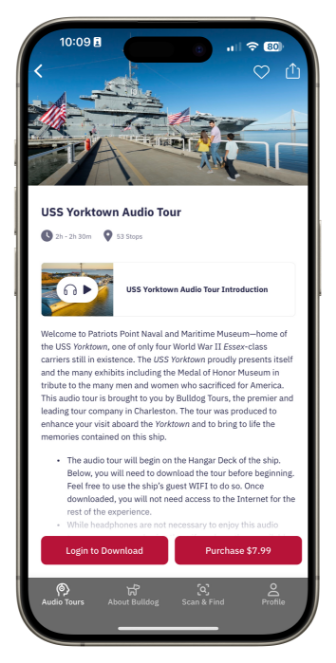
Patriots Point Audio Tour
Add the Patriots Point Experience app to all that there is to see and do here. Download the app for access to audio tours that immerse you in the real human histories of the USS Yorktown.
Open today from 10AM to 5PM
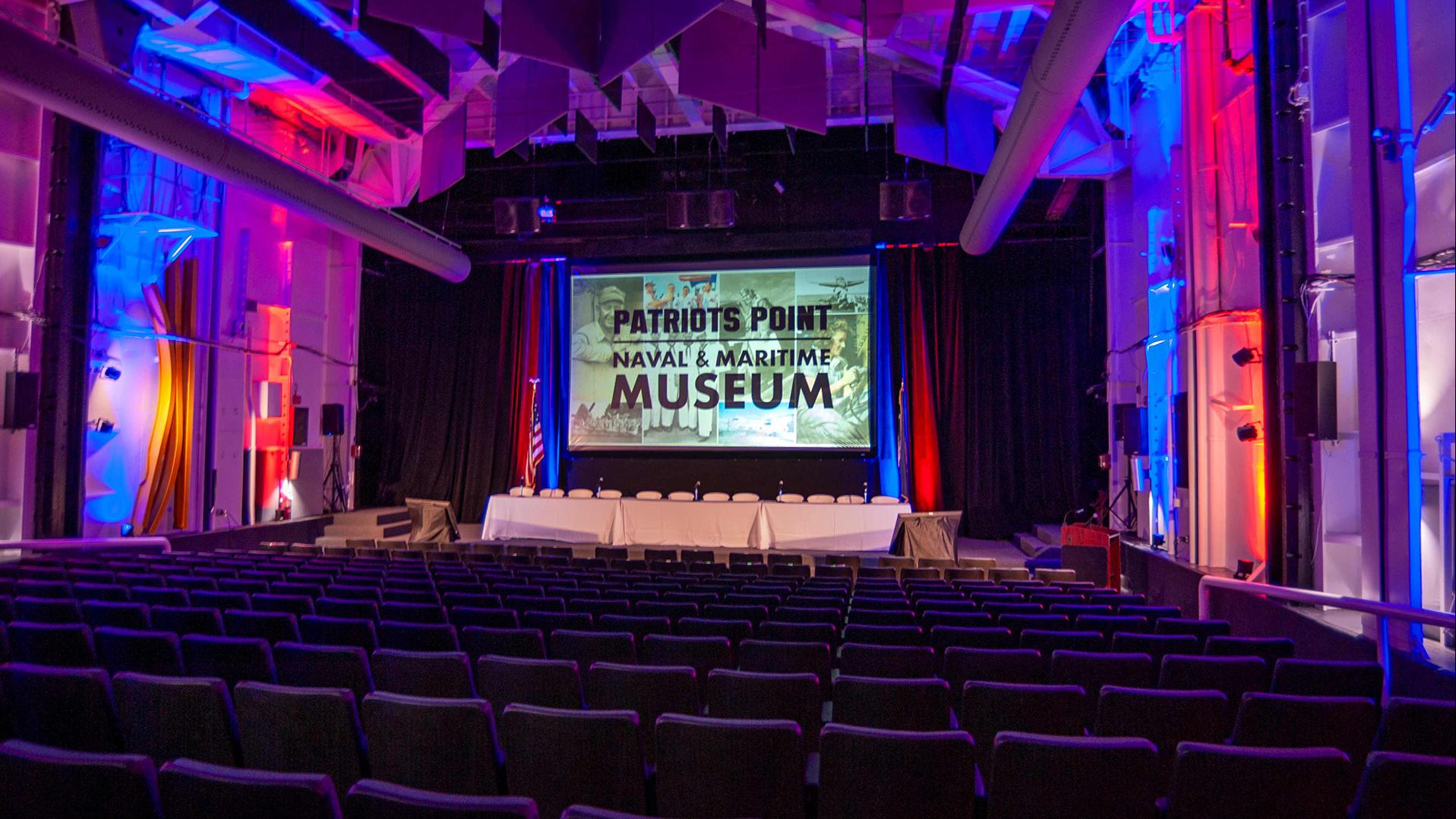
Additional ticket purchase required. Choose your adventure—or bundle both for the best value—and get ready to feel history like never before.
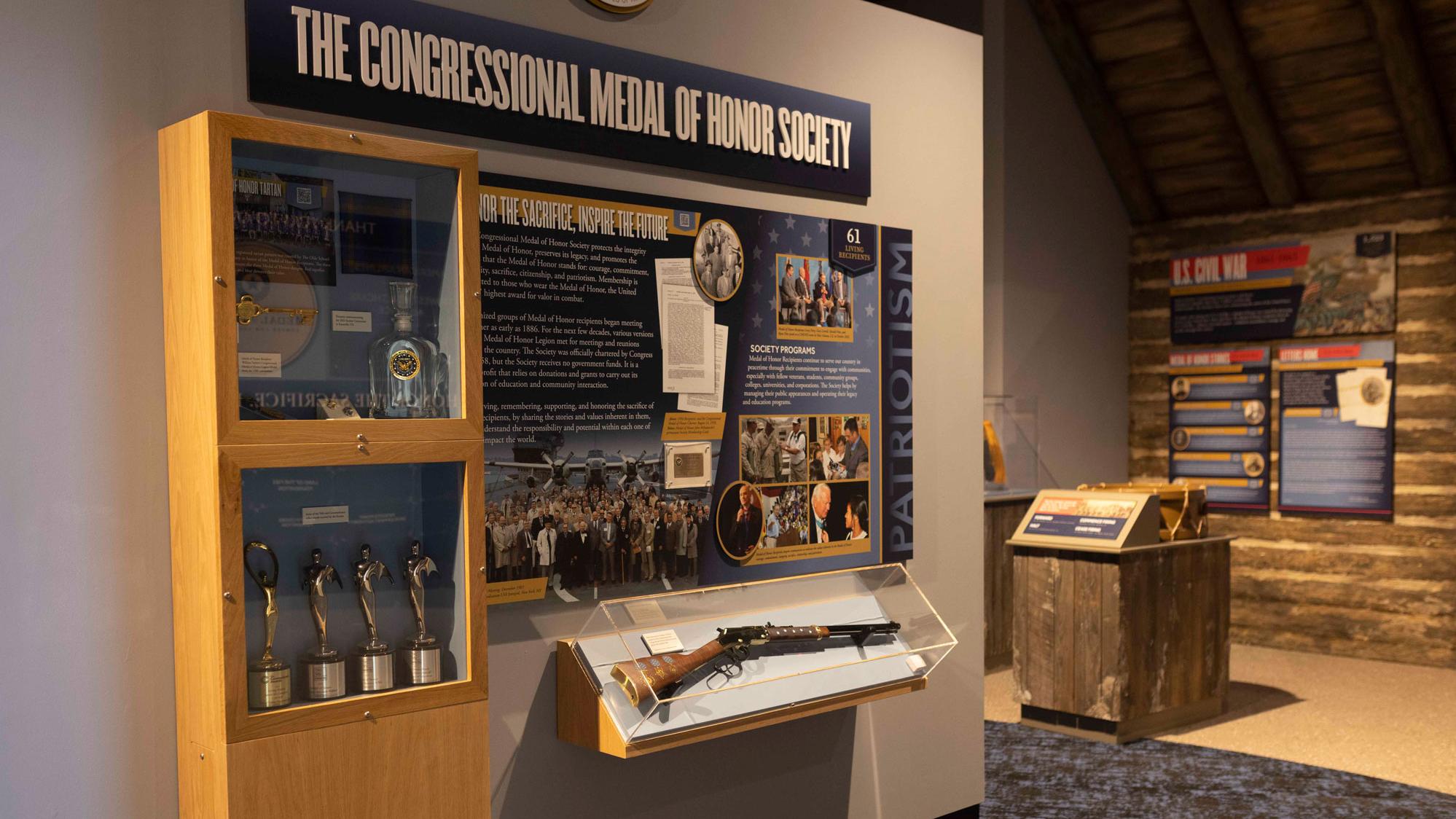
Located on board the historic aircraft carrier USS Yorktown, The Medal of Honor Museum features interactive exhibits that tell the stories of the brave Americans who have served and protected the U.S. with remarkable courage.

With nearly 6,000 square feet of event space, this unique combination of raw space and museum ambiance has the flexibility to accommodate groups of any size.
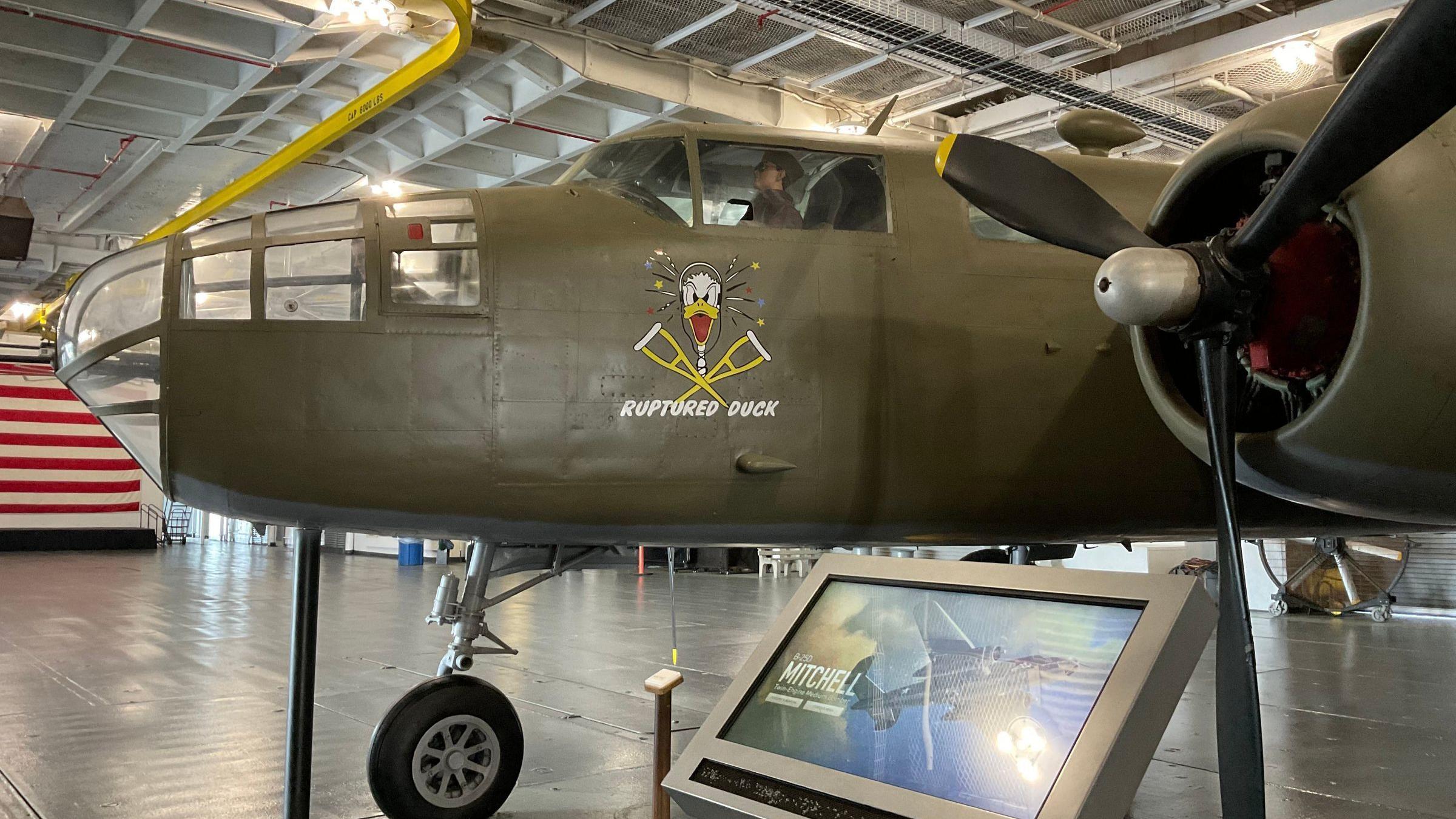
The B-25B Mitchell found fame as the bomber used in the Doolittle Raid on April 18, 1942. During the raid, fifteen M-25 Mitchell's led by Lieutenant Colonel Jimmy Doolittle attacked mainland Japan four months after the attack on Pearl Harbor. The raiders took off from the carrier USS Hornet and bombed Tokyo and four other Japanese cities. Although the amount of actual damage done was relatively minor, it forced the Japanese to divert troops for home defense for the remainder of the war. Manufactured by North American Aviation, the high-altitude bomber was considered both sturdy and operator friendly. The B-25 Mitchell was the most-produced American medium bomber and the third most-produced American bomber overall, serving in both theaters of World War II.
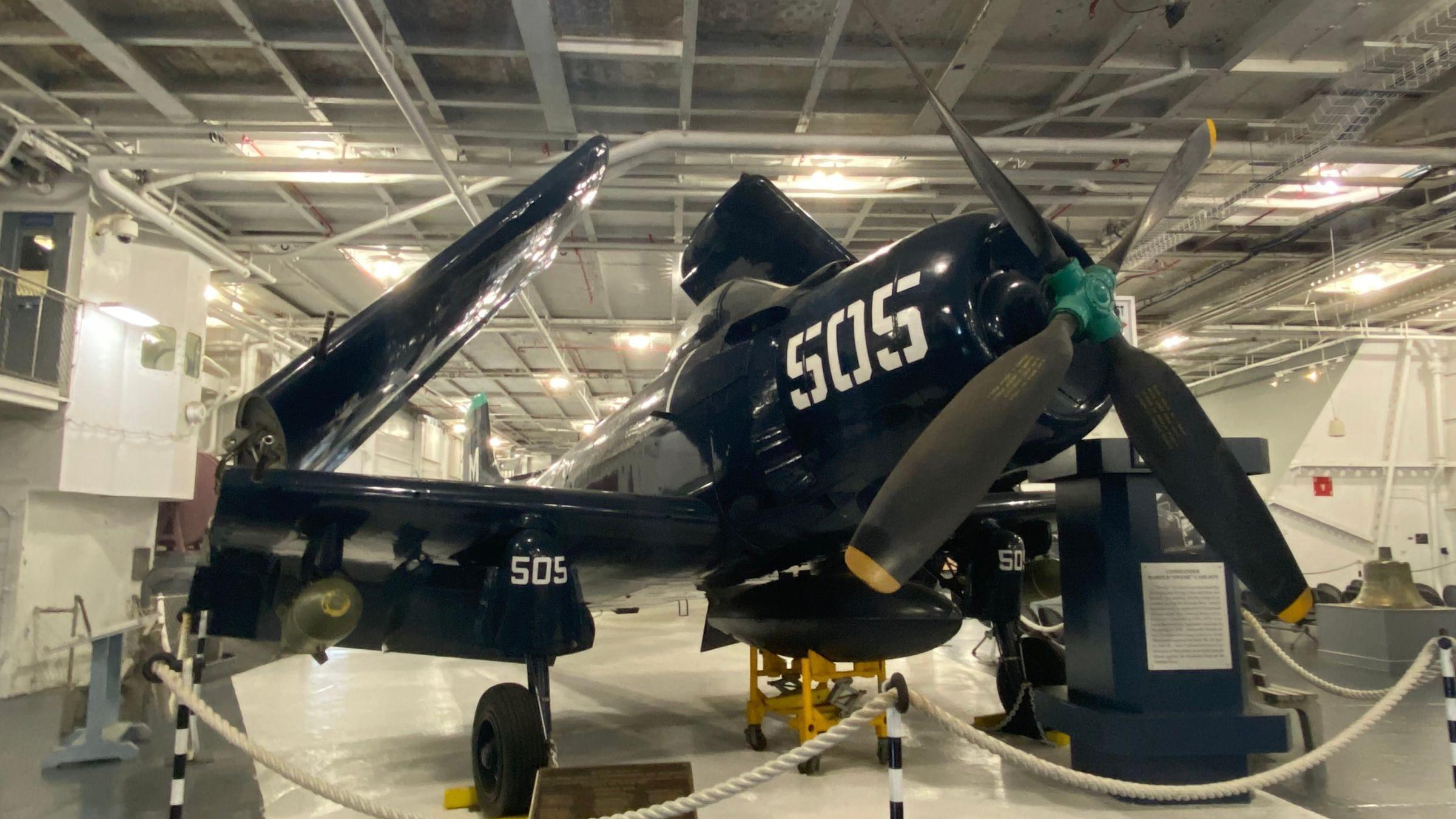
The Douglas Skyraider was the heavy duty torpedo/dive bomber the WWII Navy was looking for in the mid 1940s. But the war ending victory over the Japanese came before Skyraider was able to see action. The first AD‐4N was delivered in 1946 and manufacturer Douglas continued its tradition of starting the names of Navy aircraft with "sky." It was a versatile attack bomber, capable of day or night missions, reconnaissance, and airborne early warning. Skyraider became the backbone of the Navy's carrier aviation strike force.

With its signature inverted gull wings and over-sized propeller, the powerful FG-1D Corsair could hit 470 mph, pack a stinging punch and strike fear in the hearts of Japanese Zero fighter pilots. Developed by Chance Vought Aviation as the F4U Corsair, many a WWII U.S. carrier pilot considered Corsair the finest fighter in the Pacific.
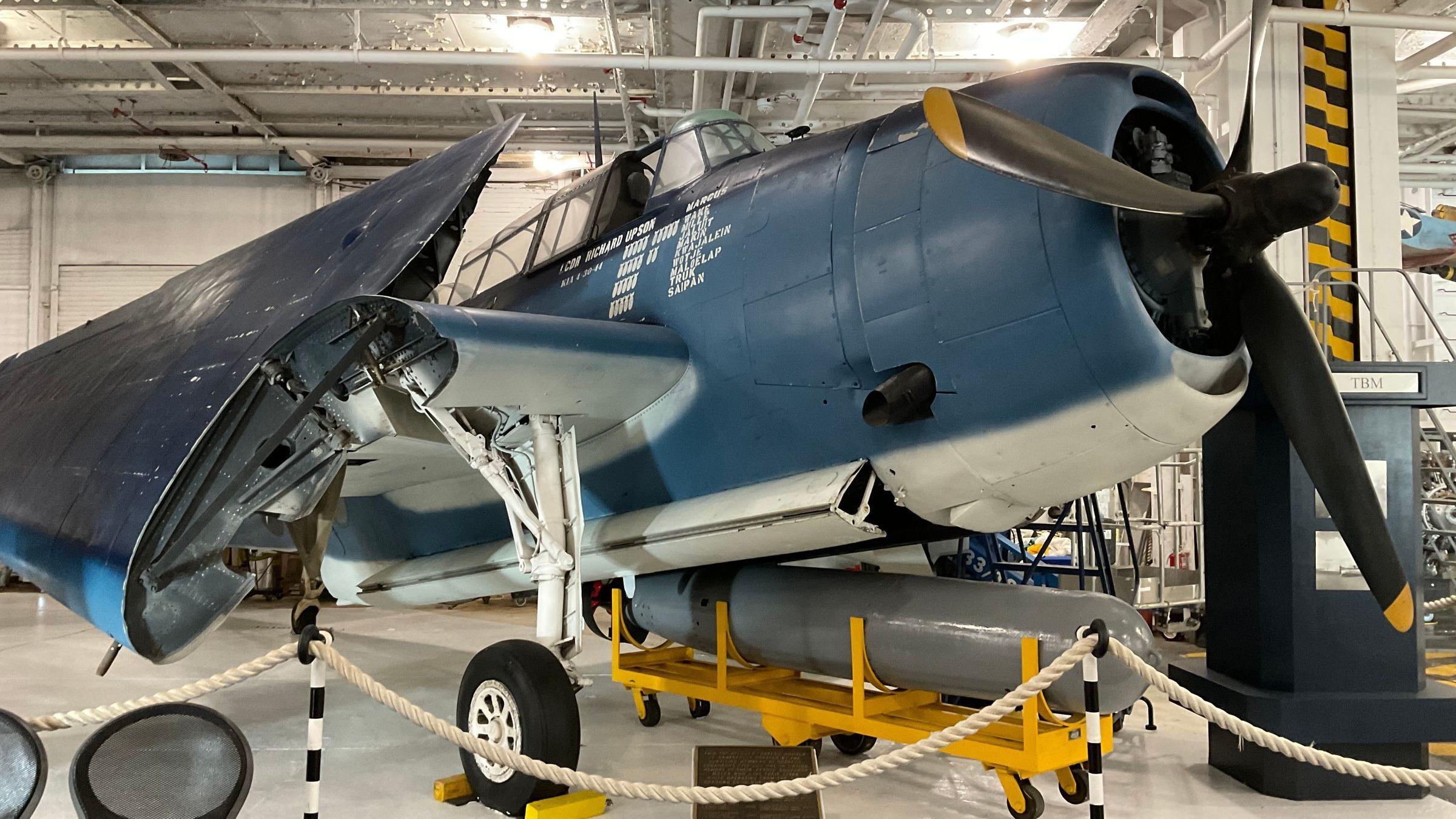
Early TBM Avengers went into Navy service in time for the June 1942 Battle of Midway. The Avenger played a pivotal role in the Pacific because of its effectiveness against the Japanese fleet and its rugged resistance to enemy fire. Avenger's three man crew included a pilot, a rear gunner in a powered turret and a bombardier/ gunner in the plane's belly.
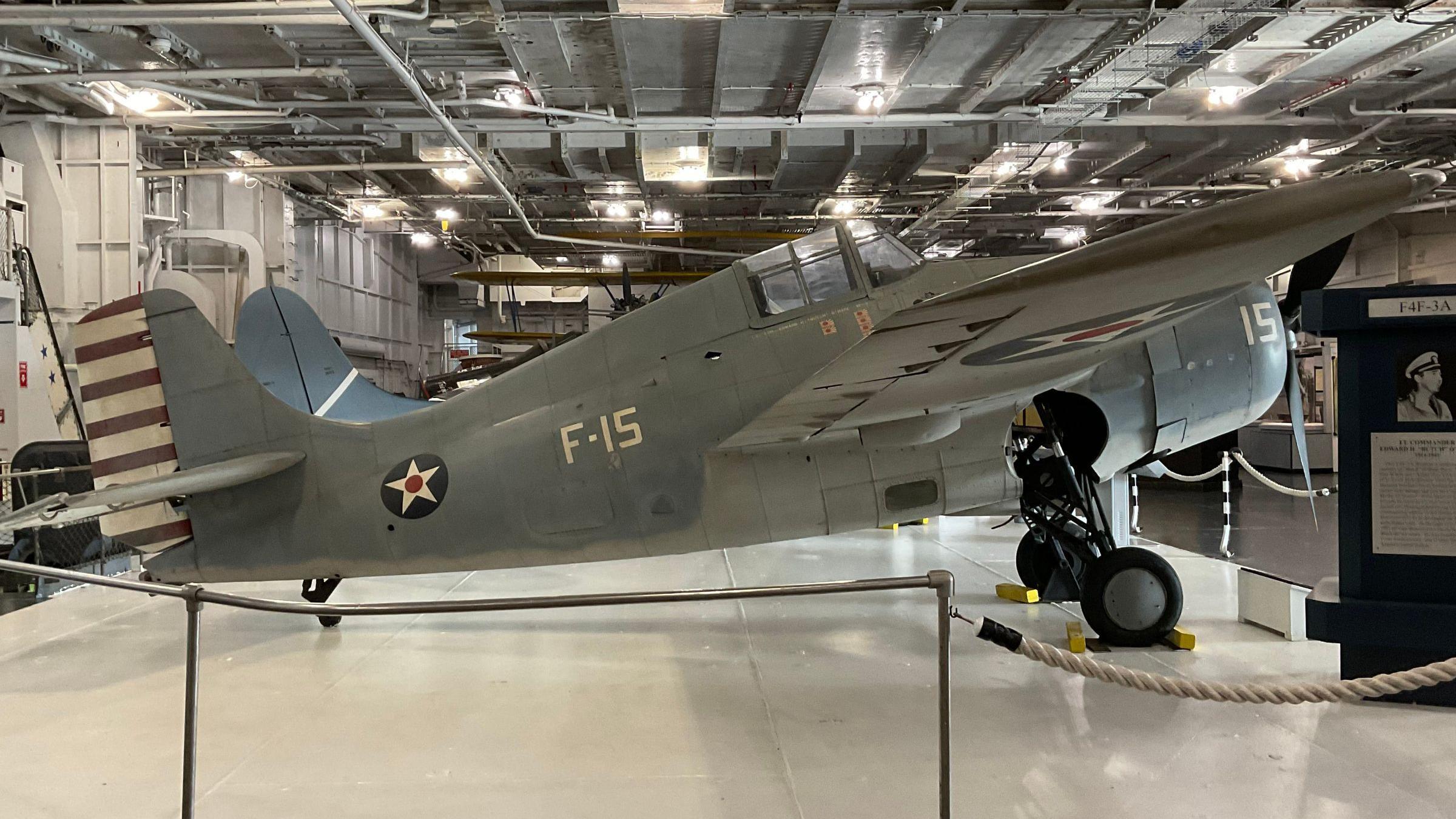
Discover the Heroic Legacy of the F4F Wildcat: Unveiling WWII’s Most Courageous Fighter Pilot and Iconic Aircraft
This museum treasure represents the WWII American fighter that took on the Japanese Mitsubishi A6M-Zero during the outbreak of war in the Pacific. Placed in service only months before Pearl Harbor, the F4F Wildcat delivered crucial blows to the enemy at Coral Sea, Midway, and Guadalcanal. Perhaps the most famous F4F pilot was Edward "Butch" O'Hare. In February of 1942, launched from the carrier USS Lexington (CV-2), O'Hare and his Wildcat were in great peril as the only thing standing between the carrier and as many as nine attacking Japanese bombers. Roaring full throttle into the enemy's formation, O'Hare shot down five of the bombers. Other Wildcats joined the fight defending the USS Lexington from the rest of the bombers. For his bravery and skill, O'Hare was awarded the Congressional Medal of Honor.
Location: USS Yorktown Hangar Bay
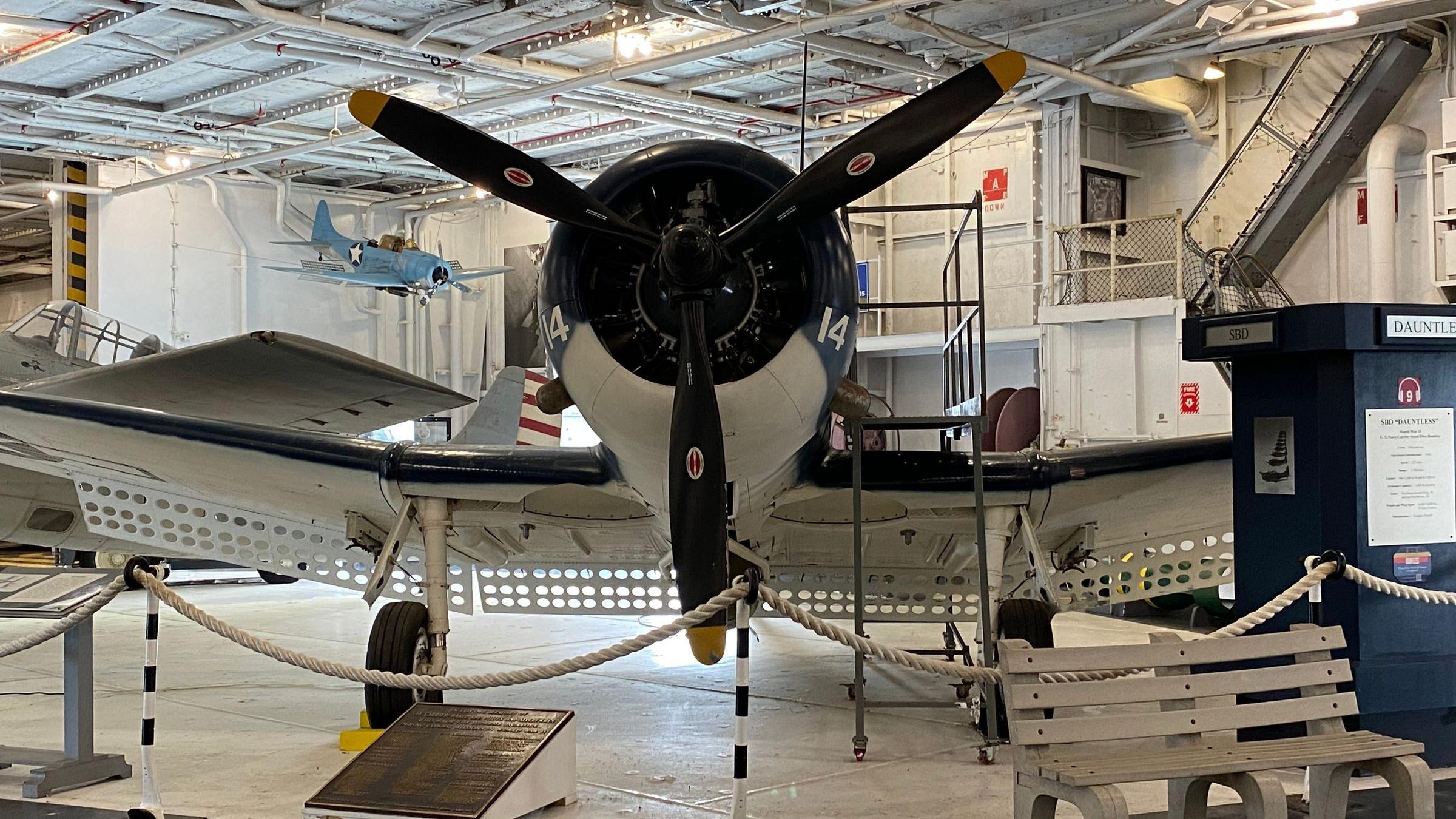
The Douglas SBD Dauntless was involved in the WWII Pacific theater from day one. In service for roughly six months prior to Pearl Harbor, the SBD Dauntless was the Navy's primary dive bomber in the early years of the war and has been credited with sinking one of the first enemy ships of WWII. The aircraft's greatest performance may have come during the pivotal Battle of Midway in June, 1942. SBD dive bombers helped sink four Japanese aircraft carriers and heavily damage two enemy cruisers.
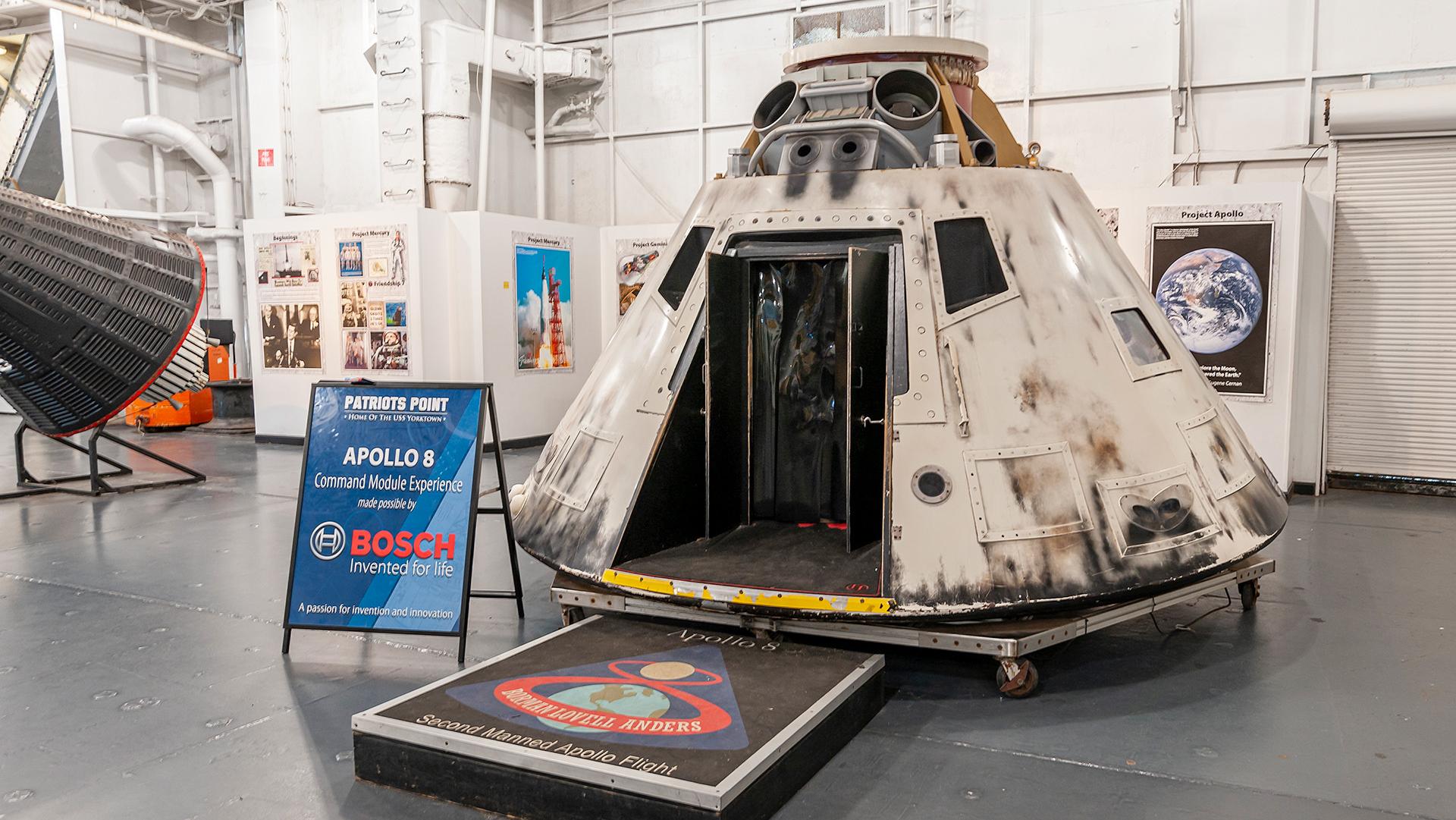
Take a ride to the moon and back inside this replica Apollo 8 capsule while listening to actual radio communication and watching video recorded during the mission.
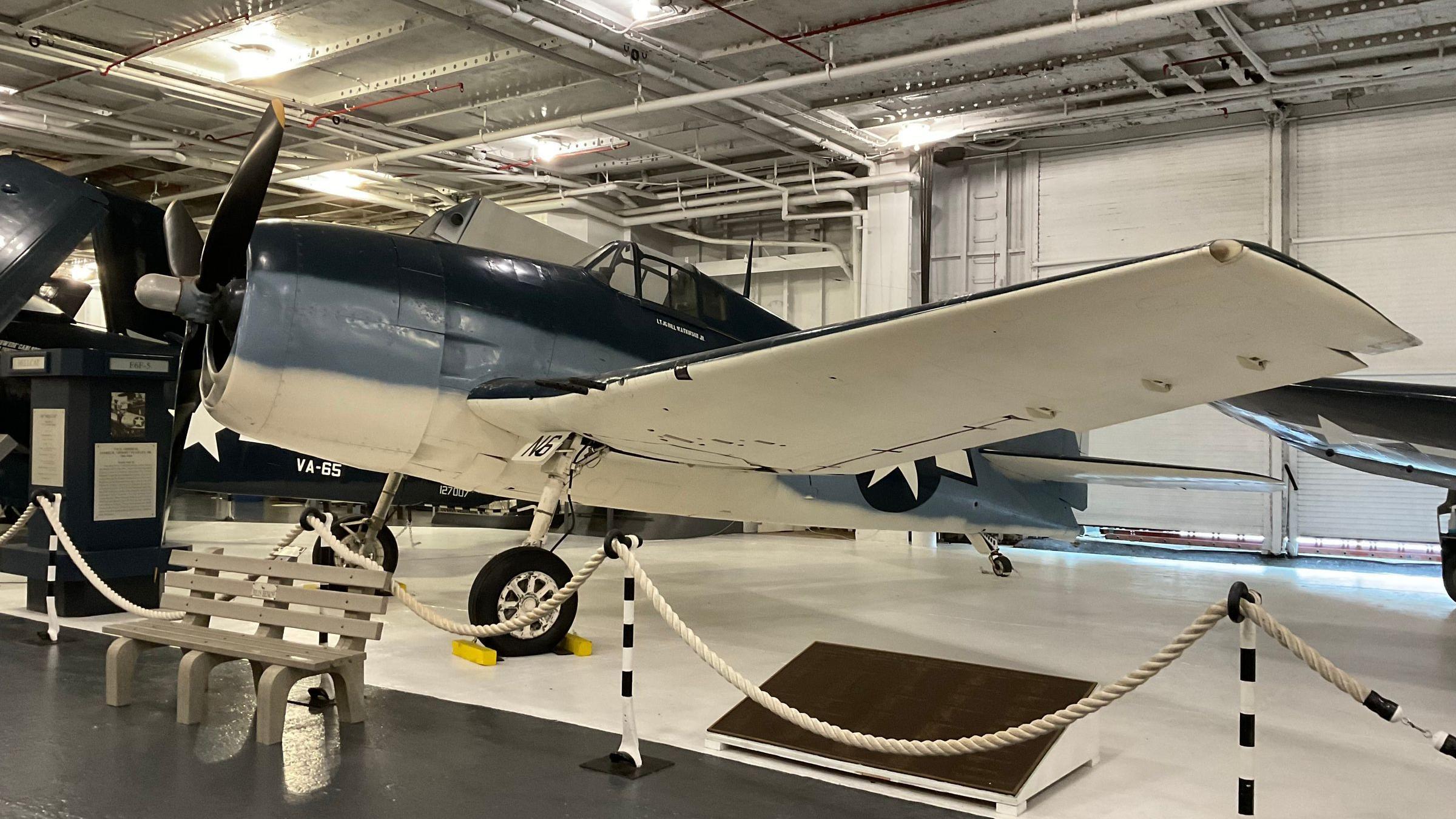
The lethal F6F Hellcat gained enormous fame during WWII operating from the USS Yorktown. Making their first combat flights from Yorktown in August 1943, the more powerful and agile Hellcat dominated the Pacific Theater, and is credited with more air-to-air kills than any other U.S Navy aircraft in history.
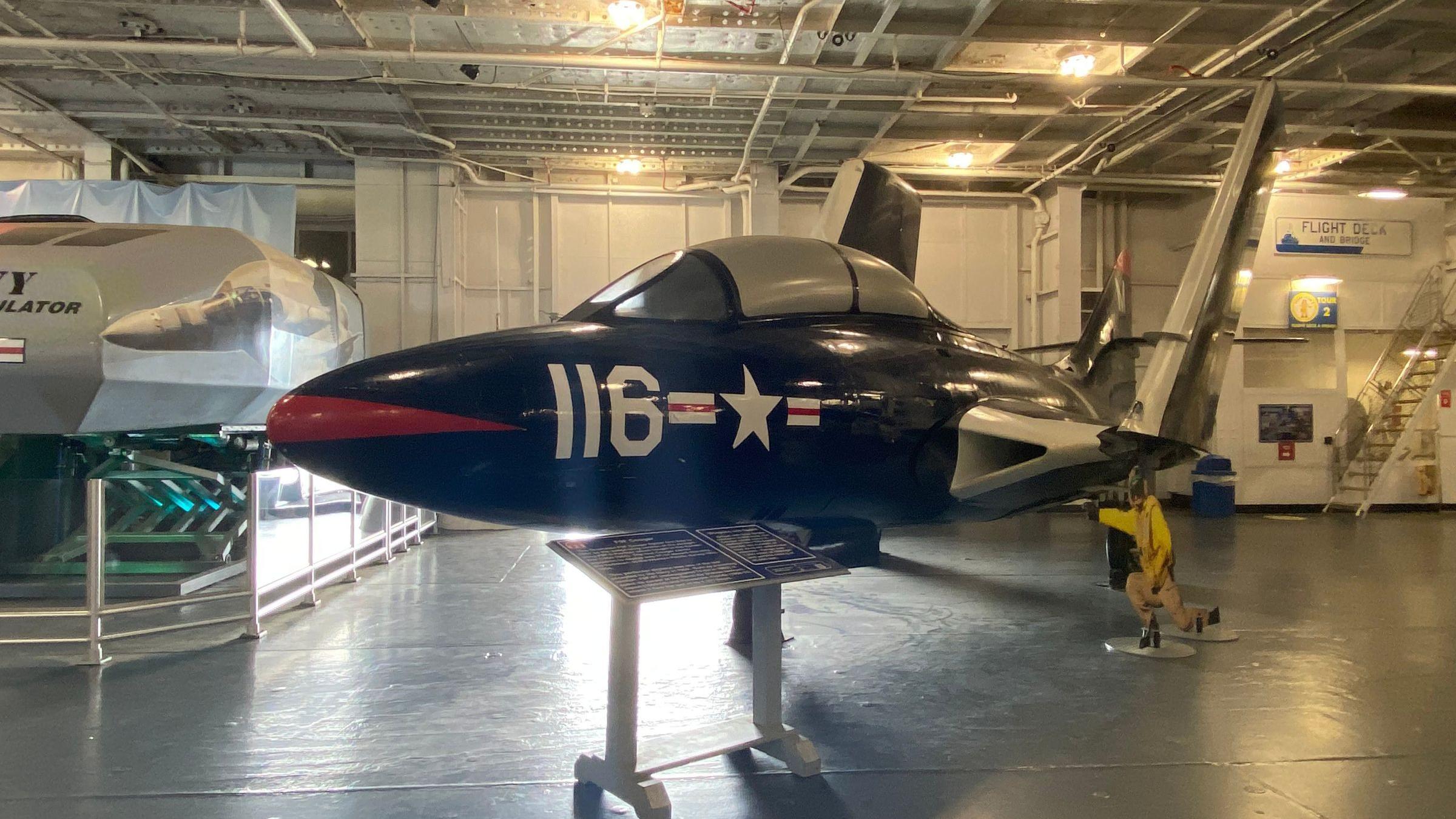
The F9F Cougar was delivered to the Navy and Marines in mid-1952 but did not see action in the Korean War. Developed as a replacement for the F9F Panther, the Cougar proved to be a superior carrier based fighter jet because of its modern swept wing design.

The "Phabulous Phantom" remains one of the most imposing fighters ever developed by the United States. First used in 1960 by the Navy as a carrier based fighter‐bomber, F-4J Phantom II would also become a workhorse for the Marines and Air Force during the Vietnam War and would play a significant role in Operation Desert Storm before its retirement in 1996. In combat the F‐4 held a superior advantage in thrust and was capable of reaching 1,485 mph with a climb rate of approximately 41,000 feet per minute! Phantom could carry more than 16,000 pounds of ordinance that included Sparrow and Sidewinder air-to-air missiles. Ultimately, Phantom was responsible for 280 air to air victories, the vast majority of them in the skies over Vietnam. Ultimately, over 5000 Phantoms were built between 1958 and 1981. Phantom continues to serve in foreign militaries around the world.
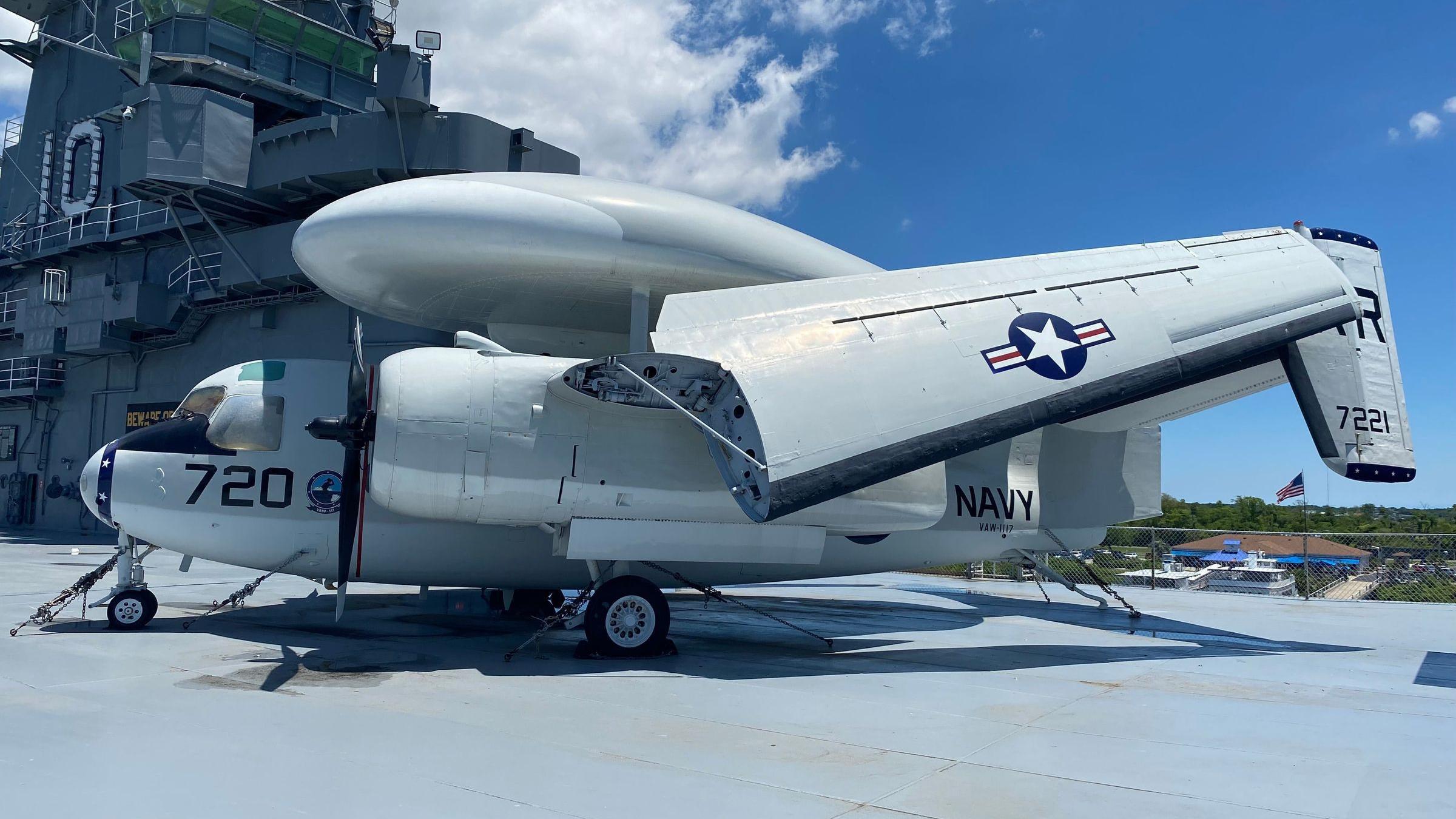
The carrier based E-1B Tracer provided critical early warning and guidance support. Its four man crew was able to remain in flight up to seven hours. The most distinguishing feature of the E-1B is the enormous aerodynamic radome over the truck of the aircraft.
With the delivery of the E‐1B Tracer, Grumman delivered to the Navy an aircraft with a single purpose: airborne early warning. Entering service in 1954, the E-1B was a derivative of the still relatively new S-2 Tracker. But the Tracer was distinct in its appearance because of its top-mounted "radome"-- a strong but electronically transparent thin shell that housed radar equipment.
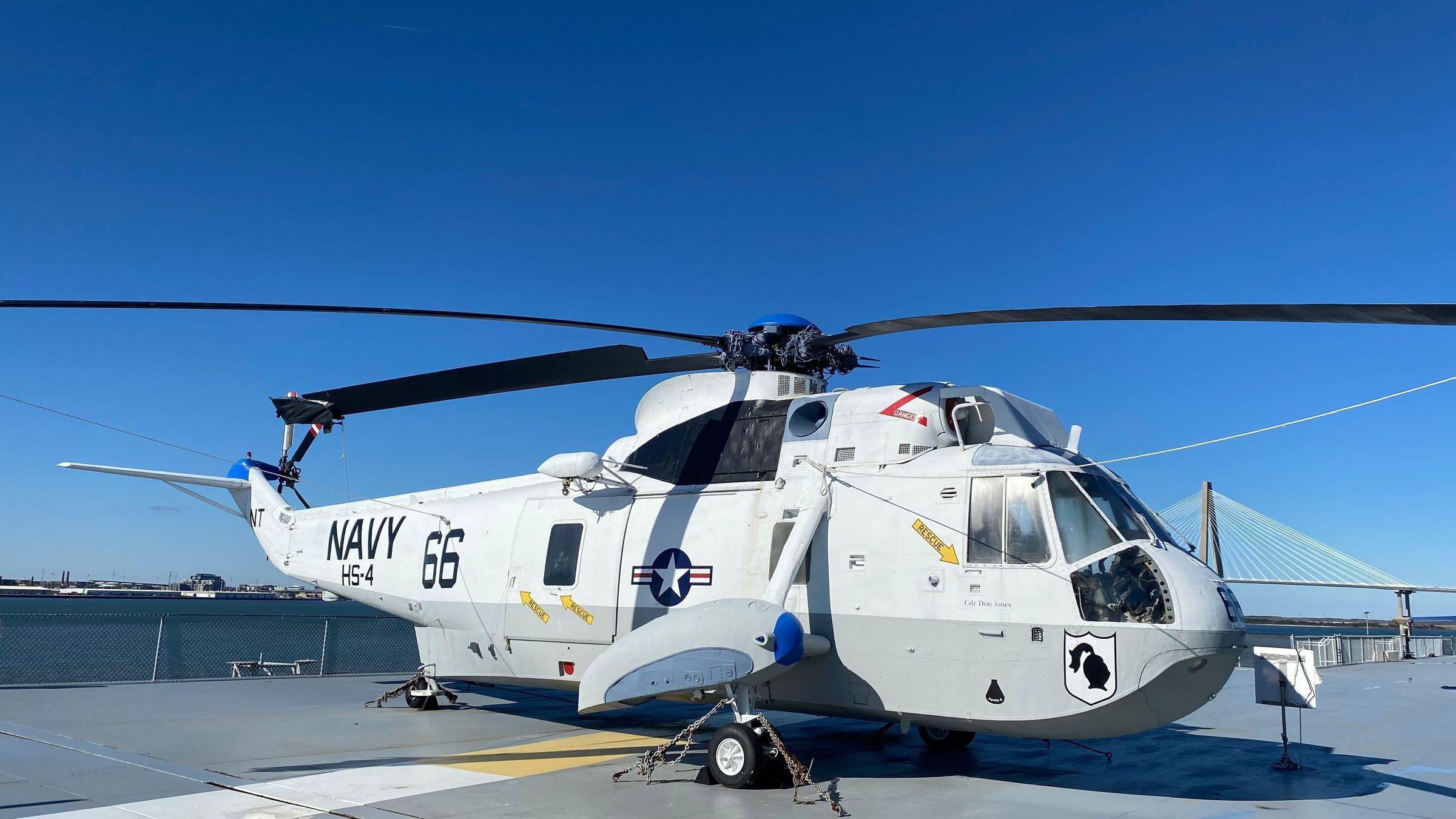
The original SH-3G Sea King was a Navy workhorse for more than 40 years. The last two operational H-3's officially retired in early 2006, although an updated Sea King model is still in use by the Navy Reserves as an anti-submarine warfare helicopter.
Because of an amphibious hull Sea King models had the ability to land on water and remain watertight for a short period of time. For this very reason, the Coast Guard used the HH-3F model until it was phased out of service in the 1990s.

The EA-3B Skywarrior was the largest and heaviest aircraft to regularly operate from an aircraft carrier, earning the nickname "Whale." Skywarriors began service in 1956 as a carrier-based strategic bomber. This role was phased-out by the early 1960s as the US Navy's main strategic deterrent role moved to Ballistic Missile Submarines. Prior to the Vietnam War, many Skywarriors were converted into aerial tankers or to serve on defensive electronic countermeasure duty.

Developed as a carrier based attack aircraft, Intruder gave the Navy and Marines a high degree of bombing accuracy at night and in poor weather. The A-6 served in Vietnam, engagements in Lebanon and Libya in the 1980's and the 1991 Gulf War. Placed into service in the early 1960's, the A-6 Intruder was retired in 1997.
Fiercely loyal, former crew-members of the A-6 refer to the Intruder as "the workhorse of naval aviation". The legendary range and load carrying abilities of the A-6 still stand as some of the finest performance characteristics in the history of naval aviation.
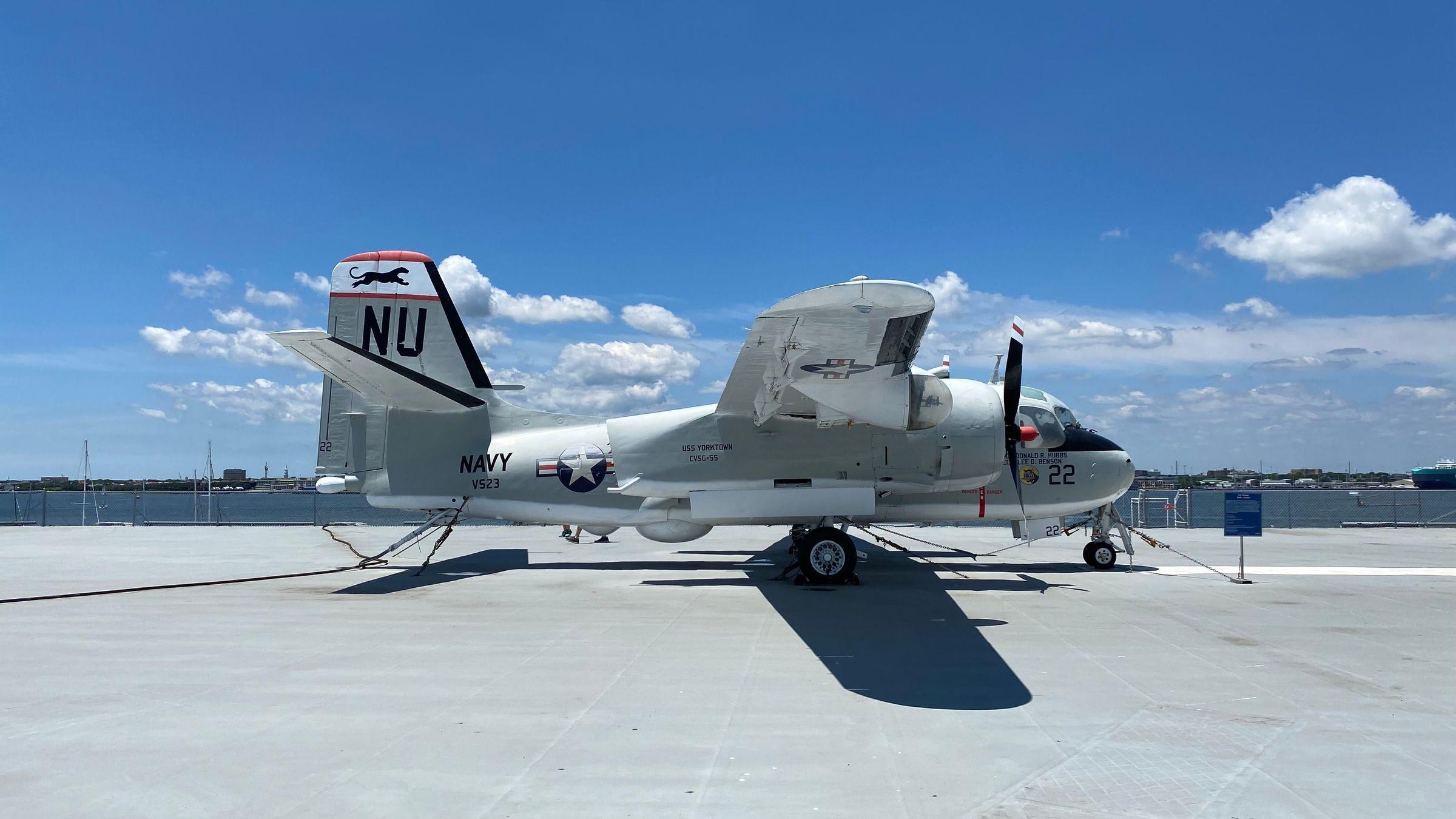
Introduced in 1954, the S-2E Tracker was designed to find, follow, and if necessary, kill enemy submarines. Spanning three decades, the primary purpose of the S-2 was to be a thorn in the side of Soviet submarines. Originally designated the S-2F-1, it didn't take long for Tracker crews to come up with the nickname STOOF (as in S-2-F).
A fixture on Essex class carriers like USS Yorktown, the S-2 expanded sub hunting to the open ocean in ways land based brethren like the P-3 Orion could not. The S-2 could turn into an offensive weapon, armed with a combination of torpedoes, rockets, mines and depth charges.
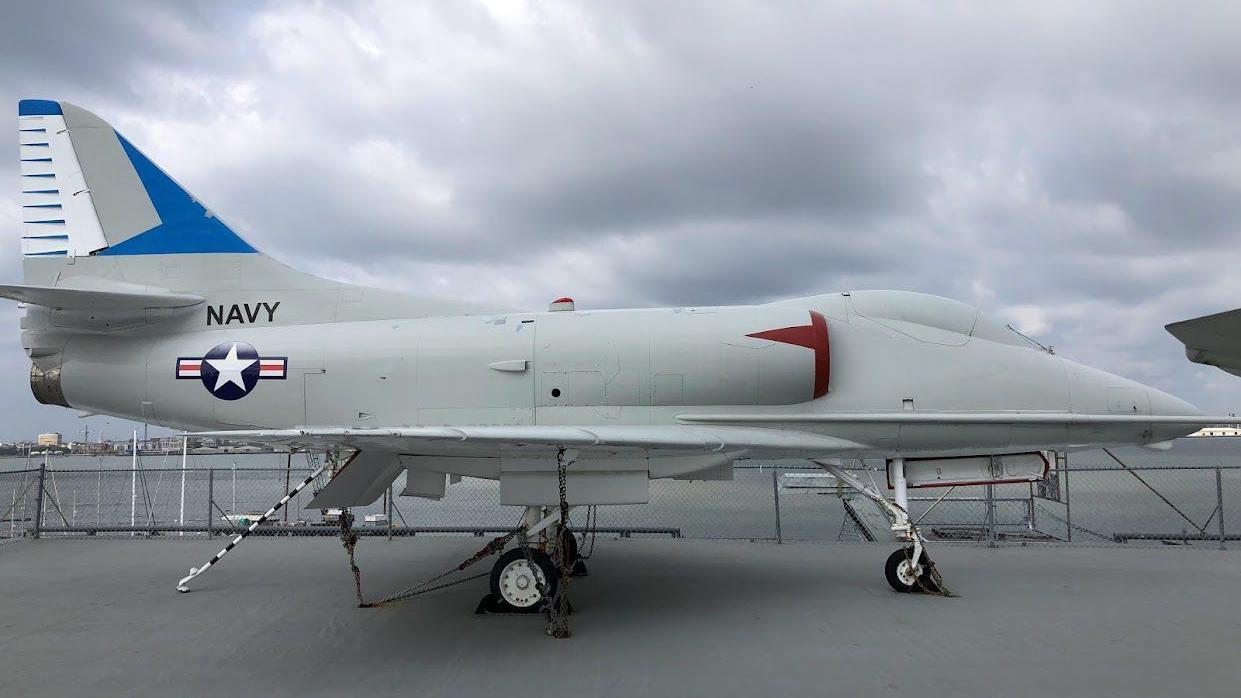
Delivered in 1956, the A-4 Skyhawk answered the Navy's call for an attack aircraft that could be carrier based in the maturing jet age. Designed with minimal size and weight in mind, the A-4 was so compact and storage friendly there was no need for folding wings. It would stay in service until final retirement in 1975. Launched from American aircraft carriers in Southeast Asia, the A-4 was the Navy's primary light bomber in the early years of the Vietnam War, striking enemy targets in the north. Many skilled and heroic pilots sat at the controls of the A-4 with more than a few of them fondly recalling Skyhawk as one of the greatest attack aircraft ever built.
Our Skyhawk is currently under refurbishment.
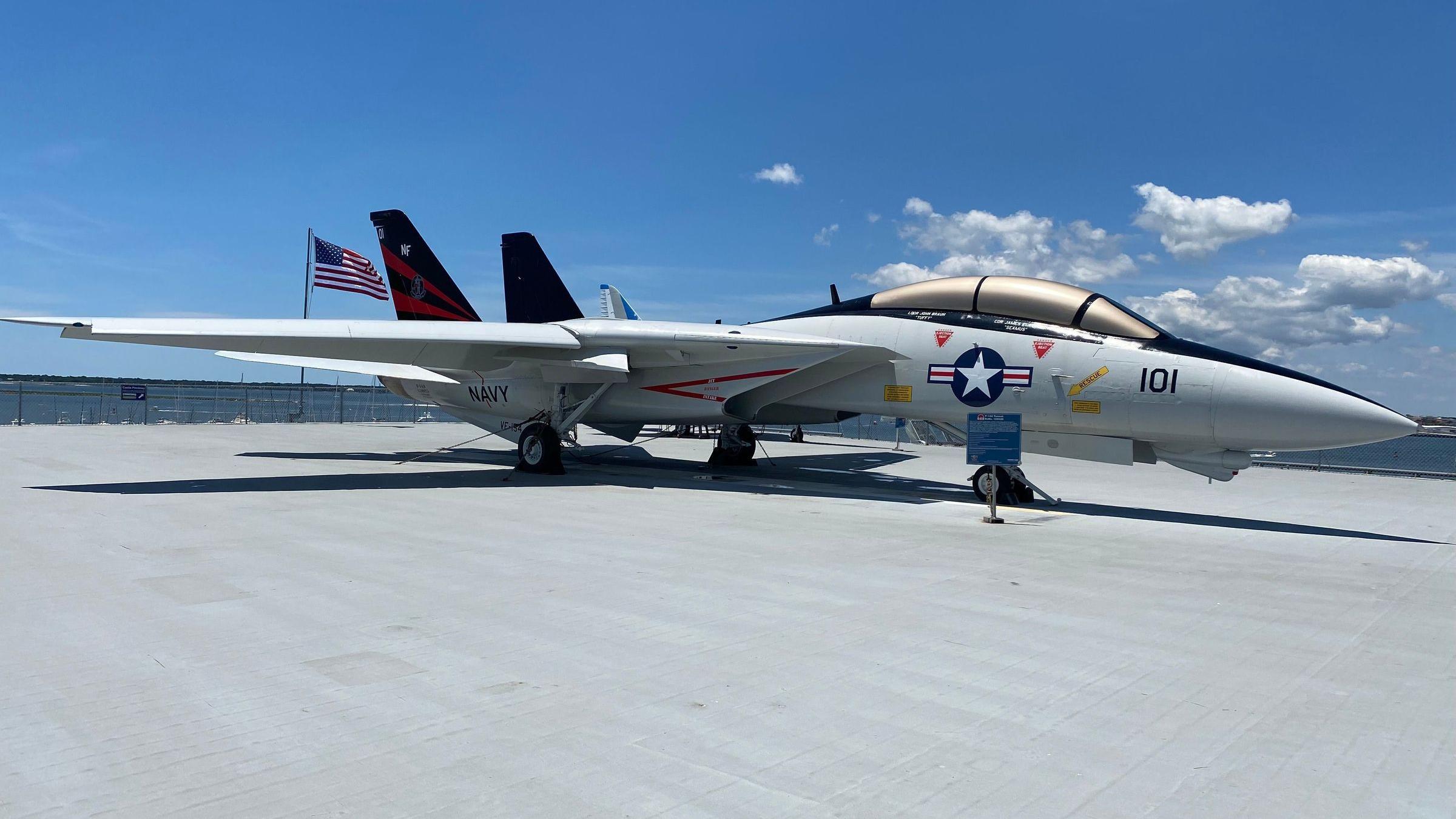
The F-14 Tomcat defined air superiority launched from Navy aircraft carriers. Entering service in 1972, the F-14 Tomcat is a supersonic, variable sweep wing fighter designed to attack and destroy enemy aircraft at night and in all weather conditions. With its advanced weapons control system and array of missiles, rockets and bombs the F‐14 can simultaneously track up to 24 targets. With a maximum speed of 1,544 miles per hour, the F-14 has taken its place as one of the most powerful and lethal fighters in Navy history. The F-14 Tomcat was officially retired in September of 2006.
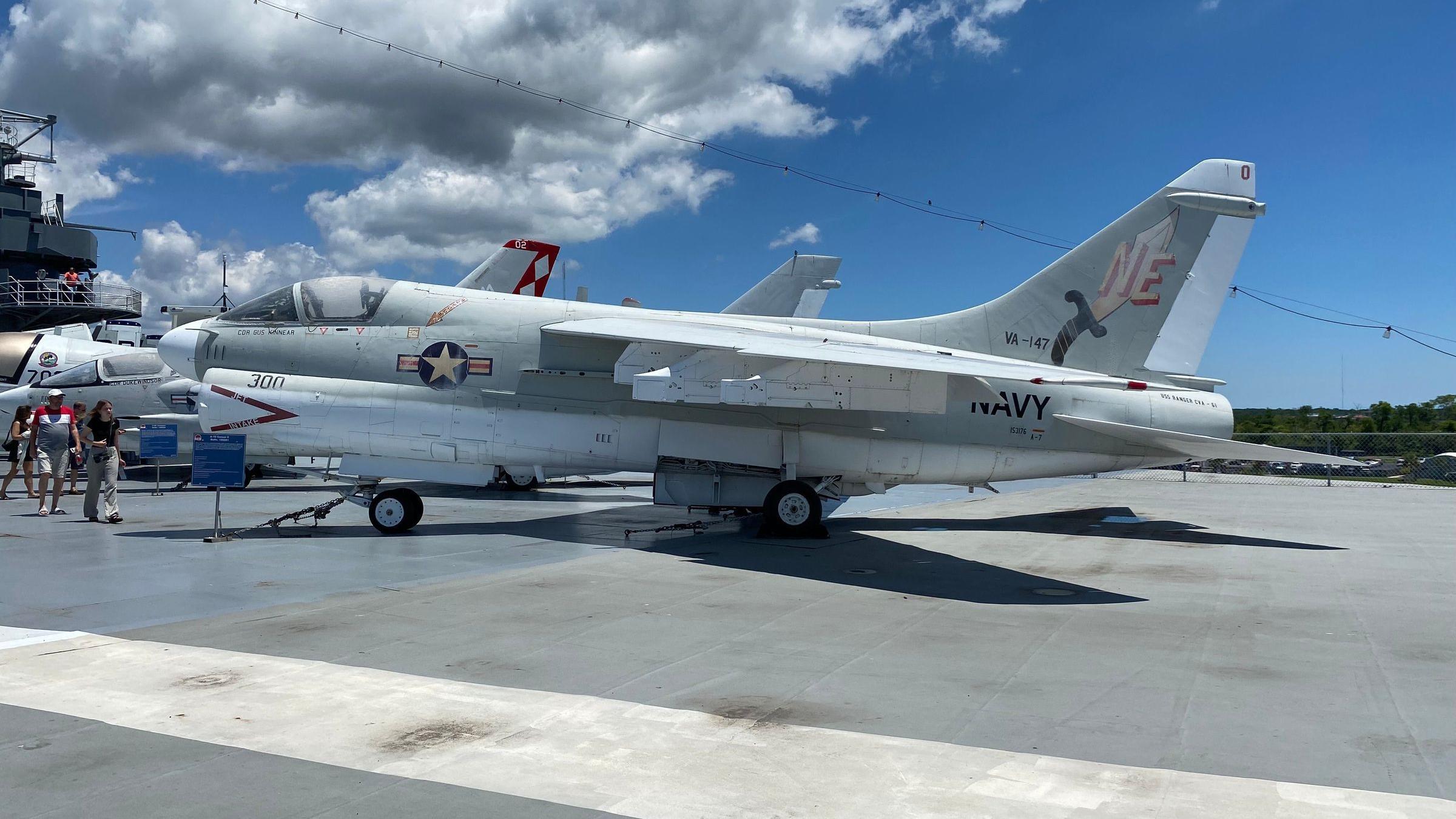
The A-7 Corsair was a carrier based light attack aircraft designed to take the place of the A-4 Skyhawk. If the Corsair looked like a shorter version of the F-8 Crusader its because the Navy based its design request on Crusader's successful supersonic track record. The A-7 was given its popular name by manufacturer Chance Vought in honor of the legendary WWII F4U Corsair.
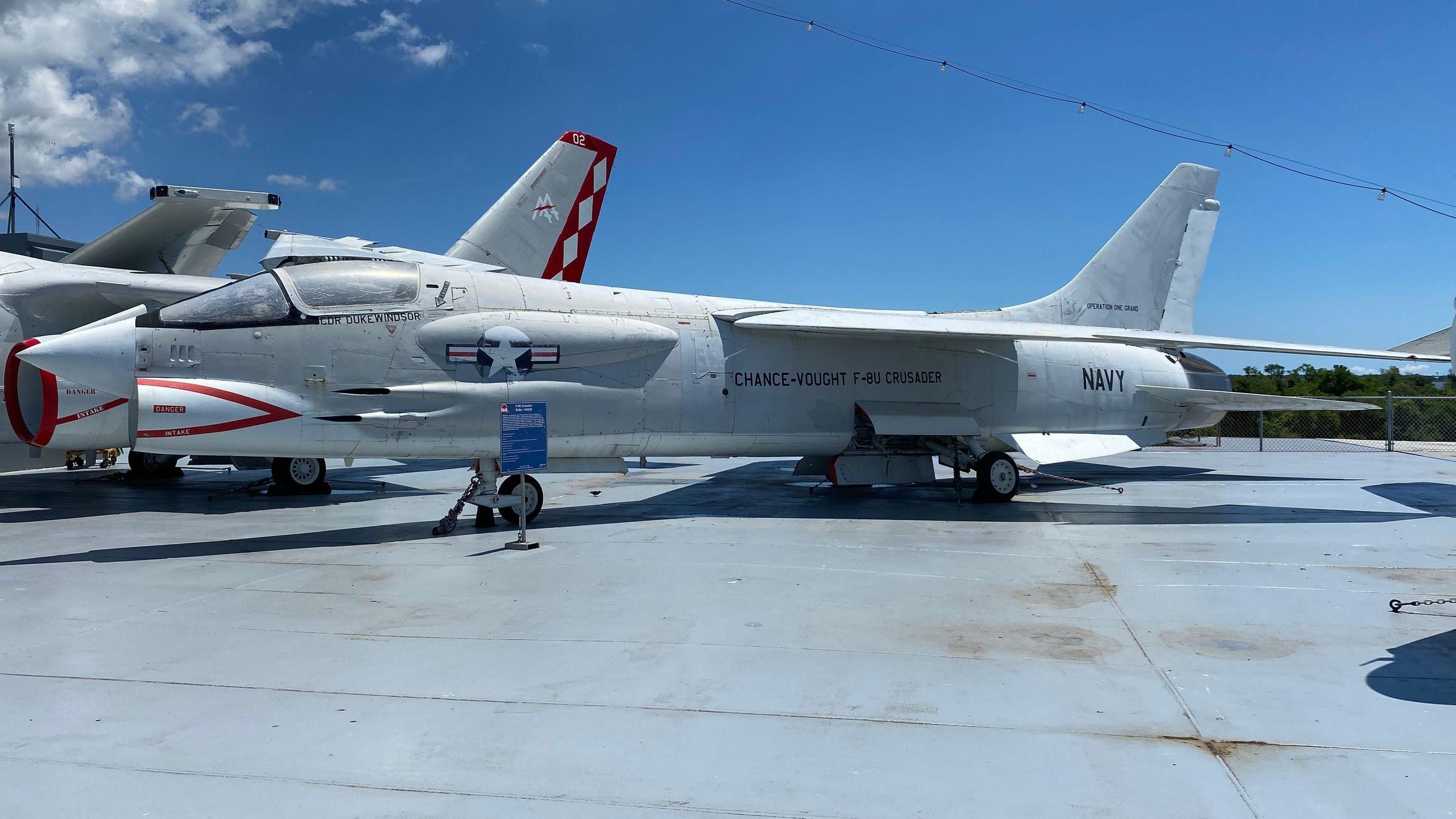
Distinctive in appearance, the F-8 Crusader, known as the "Last of the Gunfighters," was one of the US Navy's first supersonic, carrier-based fighter aircraft. Entering service in 1957, the F-8 was the last US fighter designed with guns as a primary weapon. Eventually equipped with Sidewinder missiles, Crusader excelled in dogfights with Vietnamese MIGs and was referred to as the "MIG Master."
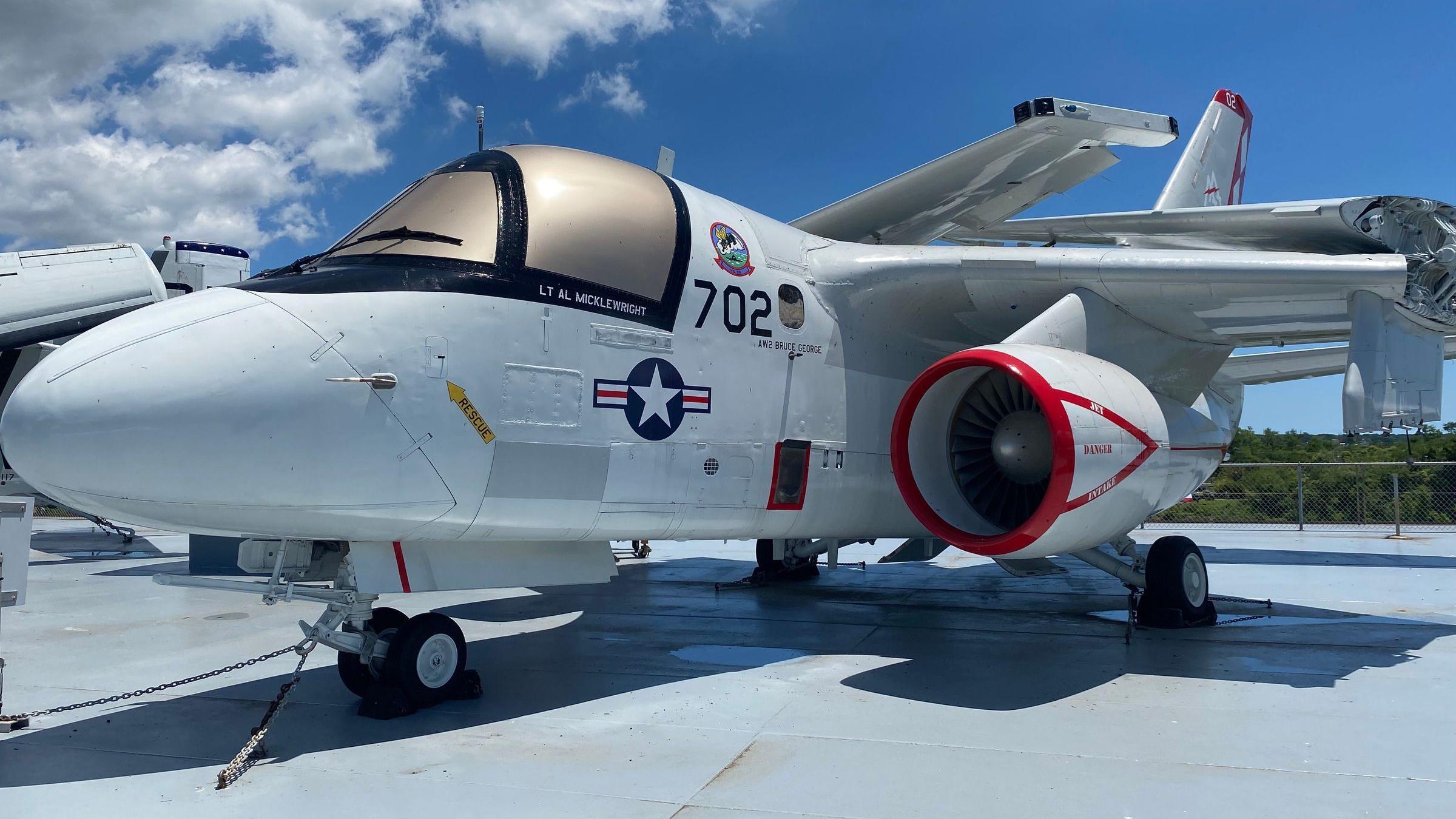
Designed to hold up to four crewmen, the Lockheed S-3 Viking is a twin-engine jet aircraft. designed and produced by the American aerospace manufacturer Lockheed Corporation. The location of the engines on the aircraft increased the fuel efficiency of the Viking but also produced a particular sound, earning them the nickname "War Hoover." The S-3B variant has upgraded avionics and radar. Designed as a successor to the Grumman S-2 Tracker, the S-3 Viking was developed for anti-submarine warfare. The first Vikings were introduced in 1972 and put into Naval operation in 1974.
On loan from the National Naval Aviation Museum in Pensacola, Florida. Bureau number: 159731
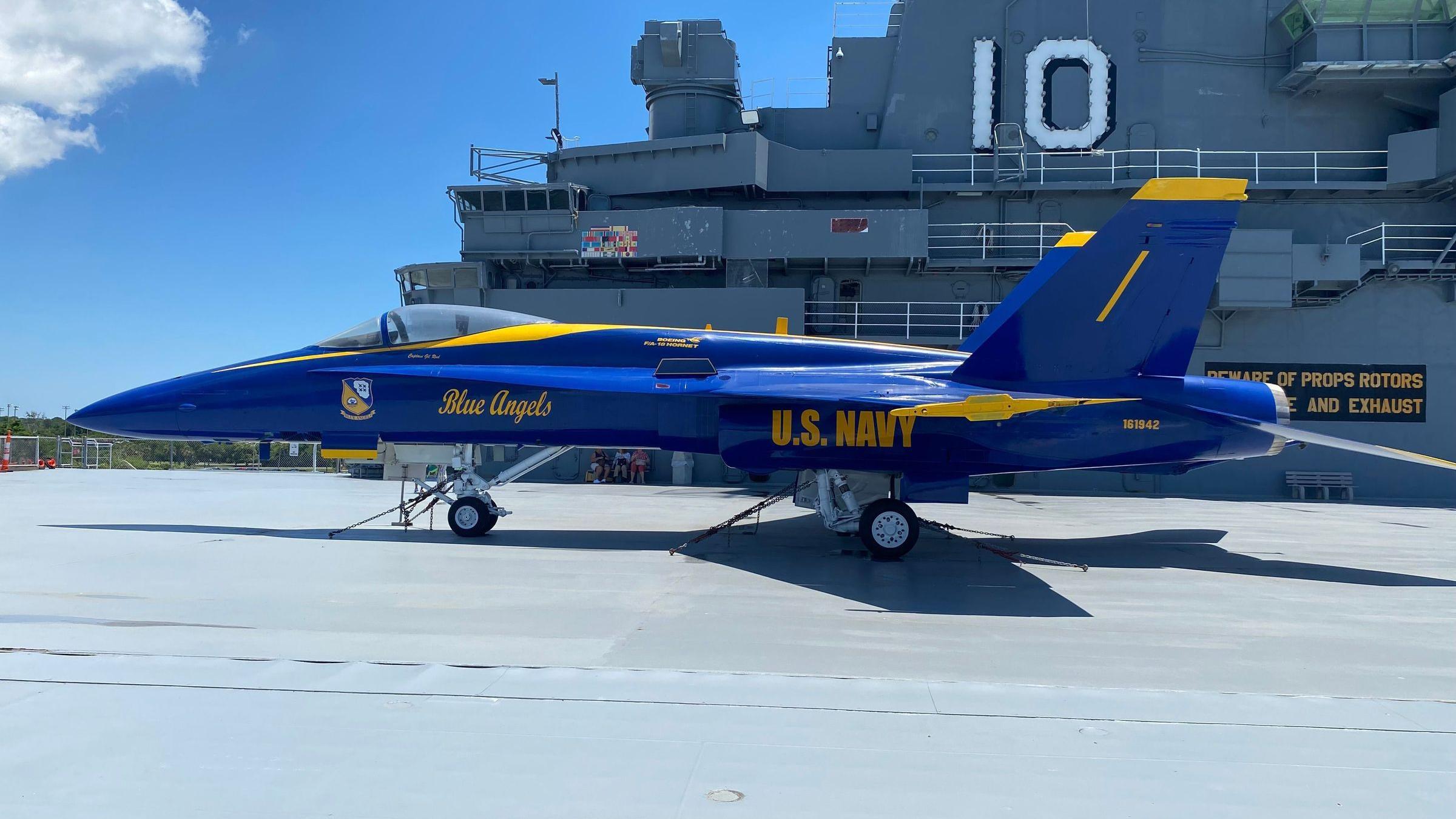
The single seat F/A-18A Hornet is an all-weather fighter and attack aircraft. Hornet holds the distinction of being our nation's first strike-fighter. According to the United States Navy, "it was designed for traditional strike applications such as interdiction and close air support without compromising its fighter capabilities. With its excellent fighter and self-‐defense capabilities, the F/A-18A at the same time increases strike mission survivability and replaces the F-14 Tomcat in fleet air defense. F/A-18A Hornets are currently operating in 37 tactical squadrons from air stations world‐wide, and from 10 aircraft carriers." America's premier flight demonstration team, the Navy's Blue Angels Squadron, currently flies the F/A-18 Hornet.
Continue Tour 2 up to the Captain's Bridge, Admiral's Bridge and Look Out Platform.
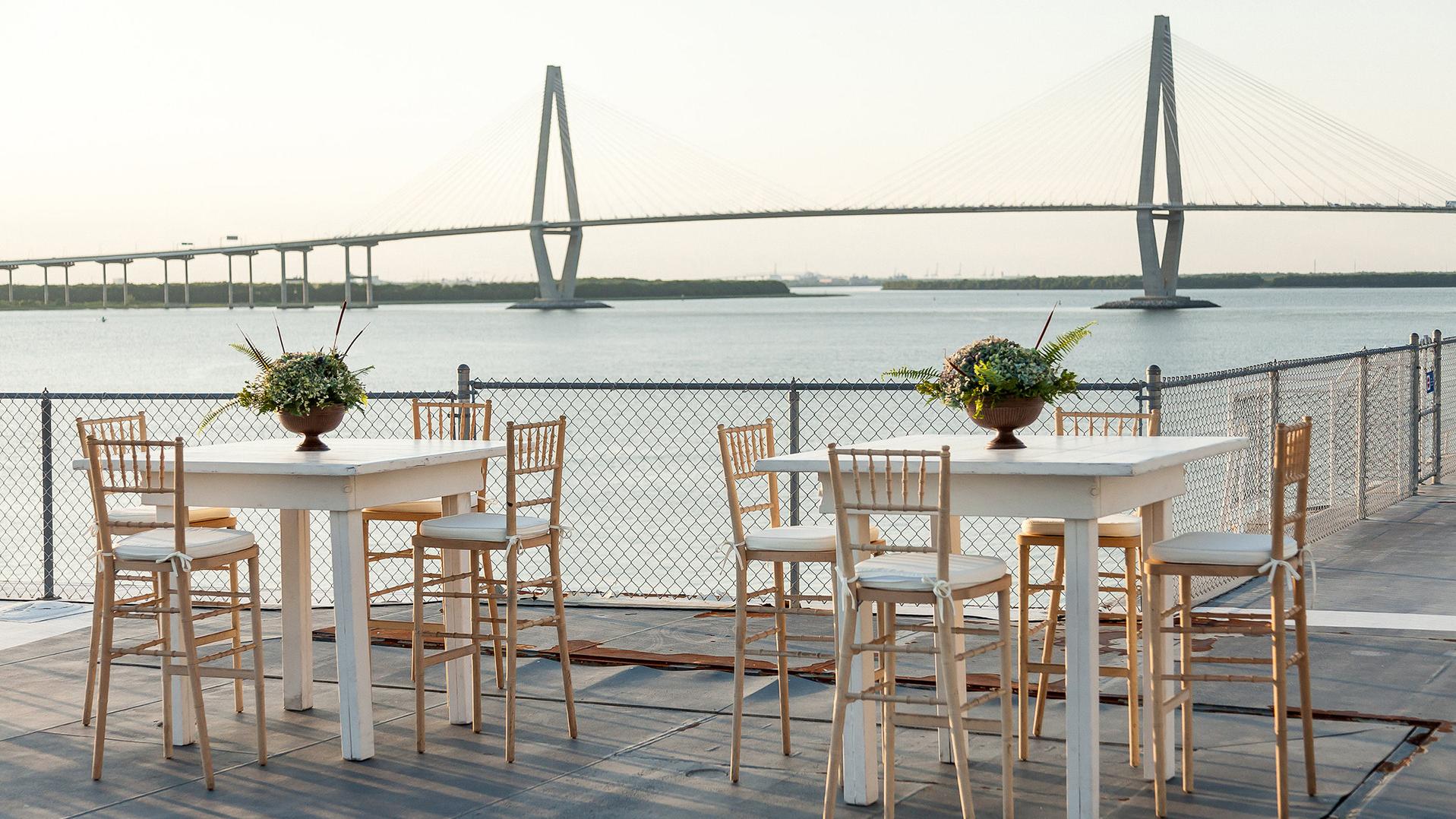
Enjoy panoramic views of Charleston among our historic aircraft. No matter the event, this space is sure to make it memorable.

Add the Patriots Point Experience app to all that there is to see and do here. Download the app for access to audio tours that immerse you in the real human histories of the USS Yorktown.